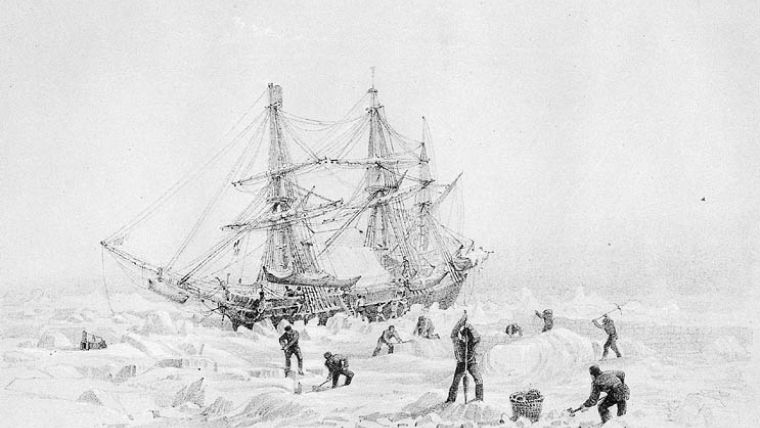Images and Video Footage of the Wreck of HMS Terror Made by ROVs
Video Included
The Canadian government has released images and video footage of the shipwreck of HMS Terror, the Royal Navy warship that was part of an 1845 Arctic mission to locate the Northwest Passage, which ended in a tragedy. The images were captured during what is described as the largest and most complex underwater archaeology project in the country’s history. Using an undersea drone, researchers explored the remarkably well-preserved interior of HMS Terror.
The ship and HMS Erebus took part in an expedition led by Sir John Franklin to find the sea route. Both ships disappeared and the place of the shipwrecks remained a mystery for over 160 years. The wreck of HMS Erebus was located in 2014 and the Terror was found two years later.
Using an Undersea Drone
The images and the footage were captured during a complex underwater archaeology project using an undersea drone. Researchers explored the remarkably well-preserved interior of HMS Terror. The Underwater Archaeology Team from Parks Canada, a Canadian government agency, conducted seven ROV [Remotely Operated Vehicle] dives and explored twenty compartments on the ship. There is a wide range of protected areas within Parks Canada's administration, encompassing National Historic Sites, National Marine Conservation Areas (NMCA), and National Park Reserves.
According to the team, beds and desks were still in place in the officers' cabins. Plates and glass bottles were spotted on shelves in what was probably the officers’ mess pantry, as well as plates, bowls and glasses in the ship's crew quarters.
HMS Terror was a specialized warship and a bomb vessel constructed for the Royal Navy in 1813. She participated in several battles of the War of 1812, including the Battle of Baltimore with the bombardment of Fort McHenry. She was converted into a polar exploration ship two decades later, and participated in George Back's Arctic expedition of 1836–1837, the Ross expedition of 1839 to 1843, and Sir John Franklin's ill-fated attempt to force the Northwest Passage in 1845, during which she was lost with all hands along with HMS Erebus.
Polar Exploration
In the mid-1830s, Terror was refitted as a polar exploration vessel. Her design as a bomb ship meant she had an unusually strong framework, so the shipbuilders thought she would be able to withstand the pressure of polar sea ice. In 1836, command of the ship was given to Captain George Back for an Arctic expedition to Hudson Bay, with the aim of entering Repulse Bay to do some surveying. However, the ship was trapped by ice for ten months and never reached its destination. She nearly sank on her return journey across the Atlantic.
Before embarking on the Franklin expedition, both Erebus and Terror were outfitted with steam engines. The expedition was ordered to gather magnetic data in the Canadian Arctic and complete a crossing of the Northwest Passage, which had already been charted from both the east and west but never entirely navigated. It was planned to last three years. The expedition sailed from the UK on 19 May 1845, and the ships were last seen in August 1845. Both ships had become icebound and were abandoned by their crews, all of whom died of exposure and starvation while trying to trek overland to a trading post. In 2016, a team from the Arctic Research Foundation found the wreck in excellent condition.
(Historical information based on www.wikipedia.org - image After George Back Public domain).

Value staying current with hydrography?
Stay on the map with our expertly curated newsletters.
We provide educational insights, industry updates, and inspiring stories from the world of hydrography to help you learn, grow, and navigate your field with confidence. Don't miss out - subscribe today and ensure you're always informed, educated, and inspired by the latest in hydrographic technology and research.
Choose your newsletter(s)
























